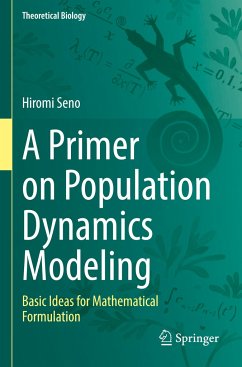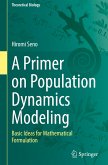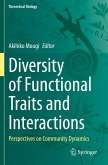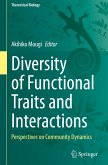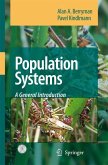This textbook provides an introduction to the mathematical models of population dynamics in mathematical biology. The focus of this book is on the biological meaning/translation of mathematical structures in mathematical models, rather than simply explaining mathematical details and literacies to analyze a model. In some recent usages of the mathematical model simply with computer numerical calculations, the model includes some inappropriate mathematical structure concerning the reasonability of modeling for the biological problem under investigation. For students and researchers who study or use mathematical models, it is important and helpful to understand what mathematical setup could be regarded as reasonable for the model with respect to the relation between the biological factors involved in the assumptions and the mathematical structure of the model.
Topics covered in this book are; modeling with geometric progression, density effect in population dynamics, deriving continuous time models from discrete time models, basic modeling for birth-death stochastic processes, continuous time models, modeling interspecific reaction for the continuous time population dynamics model, competition and prey-predator dynamics, modeling for population dynamics with a heterogeneous structure of population, qualitative analysis on the discrete time dynamical system, necessary knowledge about fundamental mathematical theories to understand the dynamical nature of continuous time models. The book includes popular topics in ecology and mathematical biology, as well as classic theoretical topics.
By understanding the biological meaning of modeling for simple models, readers will be able to derive a specific mathematical model for a biological problem by reasonable modeling. The contents of this book is made accessible for readers without strong Mathematical background.
Topics covered in this book are; modeling with geometric progression, density effect in population dynamics, deriving continuous time models from discrete time models, basic modeling for birth-death stochastic processes, continuous time models, modeling interspecific reaction for the continuous time population dynamics model, competition and prey-predator dynamics, modeling for population dynamics with a heterogeneous structure of population, qualitative analysis on the discrete time dynamical system, necessary knowledge about fundamental mathematical theories to understand the dynamical nature of continuous time models. The book includes popular topics in ecology and mathematical biology, as well as classic theoretical topics.
By understanding the biological meaning of modeling for simple models, readers will be able to derive a specific mathematical model for a biological problem by reasonable modeling. The contents of this book is made accessible for readers without strong Mathematical background.
"The novelty of the book is well achieved and also is very carefully written. The meticulous deduction of classical growth models will be certainly useful for students and the proposed exercises are an excellent complement. ... this book will certainly be a useful textbook in a course of population ecology for graduate students of ecology. In addition, the book provides a wide range of examples and topics for a basic course of differential equations or probabilities." (Gonzalo Robledo, zbMATH 1519.92001, 2023)

